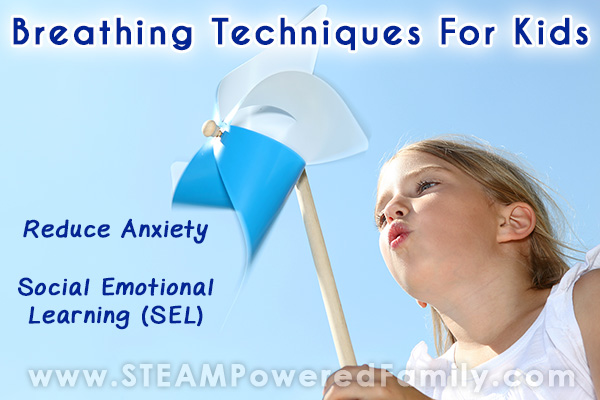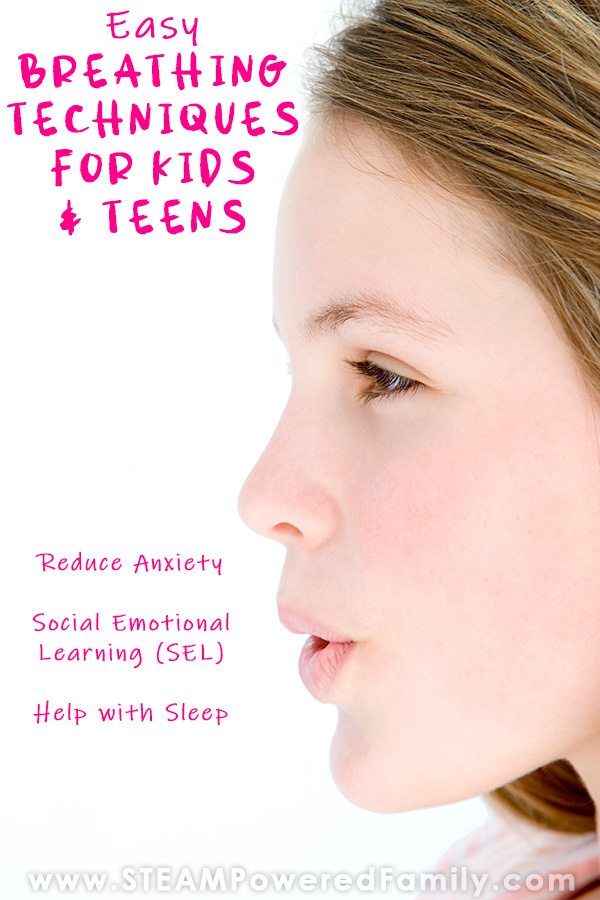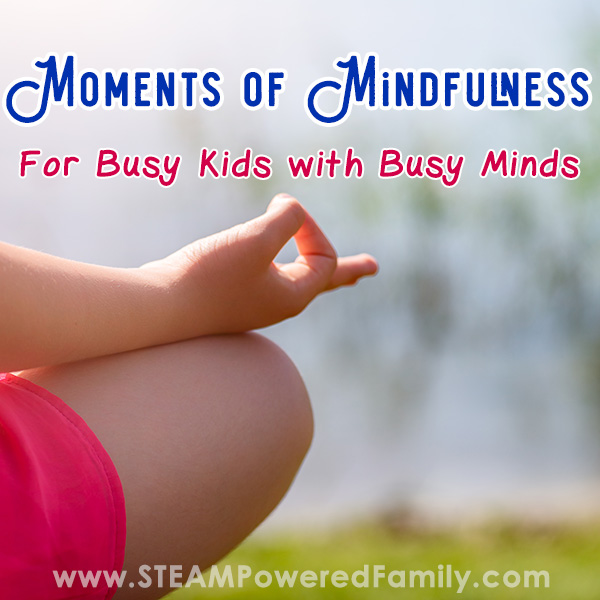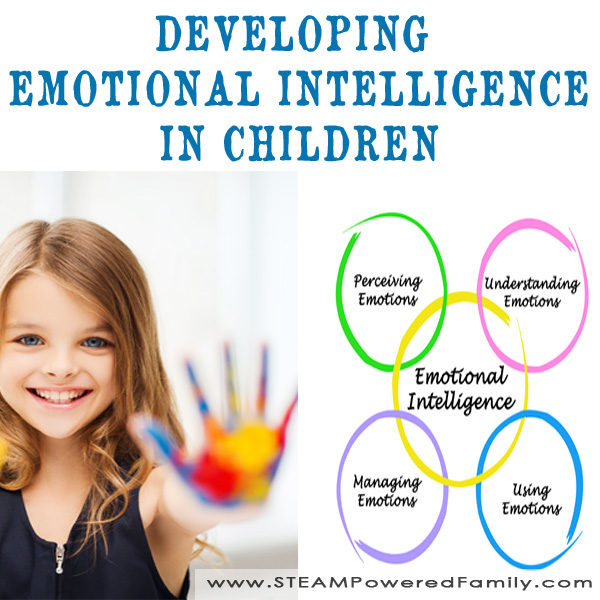Breathing Techniques for Kids
Breathing is something most of us take for granted. If you’re fortunate enough to have healthy lungs, you probably don’t even notice your breathing. However, the simple act of breathing is a gateway to calming anxiety and alleviating stress. Get started by teaching anti-anxiety breathing techniques as part of your social-emotional learning (SEL) regime at home or in the classroom. And equip kids with the tools that will help them cope with anxiety for a lifetime.
Teaching Anti-Anxiety Breathing Techniques as Part of SEL

Disclaimer: This article may contain commission or affiliate links. As an Amazon Influencer I earn from qualifying purchases.
Not seeing our videos? Turn off any adblockers to ensure our video feed can be seen. Or visit our YouTube channel to see if the video has been uploaded there. We are slowly uploading our archives. Thanks!
Everyone experiences anxiety from time to time. The causes of anxiety are as varied as its victims. What makes one person anxious may not bother another person at all. Anxiety is a reality. For some anxiety is situational, but for others, it’s a medical diagnosis and a mental health issue that can be difficult to manage without support.
Children are as likely to suffer from anxiety as older individuals. However it may present differently in children and teens, so it is important to learn how to recognize the signs of anxiety in teens and kids. Children may struggle with lack of control in their own life. Life happens to them and around them, and occasionally this results in feeling stressed and upset. It is critical to investigate the root of anxiety, but this may take some time. Meanwhile, let’s do what we can to allay those symptoms!
In my own world I have dealt with childhood anxiety stemming from a variety of sources including:
- anxiety in gifted children who understood the world in ways that far exceed their chronological age and emotional intelligence
- anxiety stemming from a history of trauma
In both cases healing and growth are absolutely possible. Seek professional help if the anxiety starts altering a child’s ability to cope with normal daily activities or becomes a consistent presence in their lives.
For all children, anxiety is going to happen from time to time, and one of the best ways to help children learn to cope with anxiety is to use breathing techniques.
Breathing Strategies for Anxiety
Coping with stress and anxiety involves many strategies: getting enough rest, eating a healthy diet, exercising, talking with a friend, or finding an activity to enjoy. A balance of these tools is essential in reducing the symptoms and impact of anxiety.
Beyond employing these strategies, what else can one do to ease the symptoms of anxiety? Breathe! The simple act of breathing can be a remedy for the anxiety sufferer, regardless of age. There are a variety of intentional breathing practices that can be used to address stress and anxiety.
The best part is that these breathing techniques for anxiety are easy to do anywhere and they become second nature with practice.
Breathing Techniques
Belly Breathing
A child experiencing anxiety will take shallow, rapid breaths, using upper chest muscles rather than the diaphragm. This can result in headaches and fatigue. Engaging the diaphragm gives better results by giving the child all the oxygen he needs during this stressful time.
How can you tell if your child is belly breathing? Have the child lie down, placing one hand on the chest and one on the stomach. If they are belly breathing, the belly should expand upon inhale and contract upon exhale.
A fun way to do this exercise with little kids is to place a stuffed toy on their stomach and have them relax and breath so the stuffed animal moves up and down.
Bubble Breathing
Blowing bubbles requires the child to breathe deeply and control the out-breath to ensure that the bubbles don’t pop. Because bubbles also involve play, it gives children an external thing to focus on. This can help alleviate stress and focus energy on blowing big bubbles.
This is a great idea for helping get kids outside, breathing and moving. All of which help reduce stress and anxiety. I also enjoy encouraging kids to study the swirling colours in the bubbles to help calm them, or if they really need to just run, have them chase bubbles for a bit.
This activity can also be done year round, creating gorgeous frozen bubbles in winter.
Pinwheel Breathing

The pinwheel gives real-time feedback on the child’s breathing, and they can modulate it based on how fast the pinwheel is spinning. Let your child choose a fun pinwheel color or design to assist in their breathing method.
Have them practice breathing in, then breathing out slowly. Then breath in and blow it out fast and hard, get that pinwheel really spinning. Then return to a long slow breath and see how long they can keep that pinwheel spinning.
Balloon Breath
Rather than use an actual balloon for this method, your child visualizes their belly as a balloon, and breathes in for four seconds, trying to fill the balloon. Next, your child holds the breath for two seconds and slowly exhales. Balloon breathing is often used as a yoga or meditation exercise.
Deep Breathing Apps or Tools
There are a number of technology based options available to help guide deep breathing. You can get apps for a tablet or phone, access tools online, or use a smart watch (my Fitbit has a great relaxation guided breathing program). These tools let the viewer know when to breathe in and out. They offer reliable, calming visuals which are great for anyone who is feeling a little panicked or overwhelmed.
These technology based tools can be very helpful for children who enjoy the multi-sensory inputs of the visuals, sounds, and even touch (my Fitbit vibrates with each change from breathing in or out), etc.
Shape Breathing
Shape breathing is also a technique that uses images to help regulate breathing. Children can align their breathing with different shapes including a triangle, square, star and figure eight. Read more about how to do shape breathing!
4, 7, 8 Breathing
This breathing technique was taught to me by a therapist to help my kids when their anxiety would really get intense.
Start by finding a comfortable place to sit. Somewhere safe where they can relax into their breathing and really get the full benefit. This technique can be especially helpful at bedtime.
Place the tip of the tongue behind the front teeth. Breath in to the count of 4, hold the breath for a count of 7, then breath out to a count of 8. Repeat one or two times.
Using this 4, 7, 8 breath pattern can help reduce stress, anxiety and anger. If the length of the breath pattern is too long, simply reduce it while keeping the same ratios. So you could do 2, 3.5 and 4.
Need more activities to help children relax? Try sensory activities to help children become centered and calm or try some relaxation activities.
Applying Techniques
Although these techniques will work for anyone who is struggling with anxiety, Bubble and Pinwheel Breathing may be more attractive to younger children. Tweens and teens are great at visualizing, so a more effective strategy for them might be an app or watch, or to ‘go to their happy place’.
Sometimes using breathing techniques can make a person dizzy. If this happens make sure they sit down immediately and pause using the breathing techniques until the dizziness has passed.
Keep in mind that YOU, as the parent or teacher, have the biggest influence over your child. Using these and other strategies yourself will go a long way towards helping your child keep their anxiety in check!
Children use the adults in their lives as a barometer for their own emotions. They also pick up coping skills by watching those they trust. Demonstrating effective ways of dealing with your own anxiety, and ensuring you care for your own mental health, will go a long way to helping both you and the child work through childhood anxiety.





